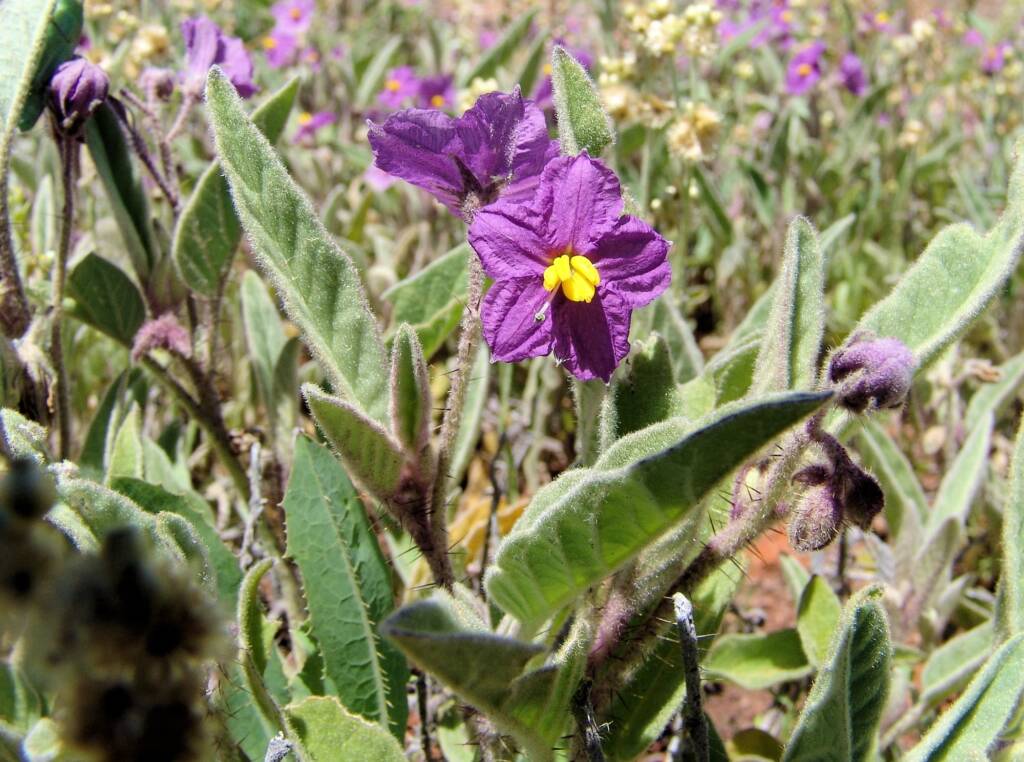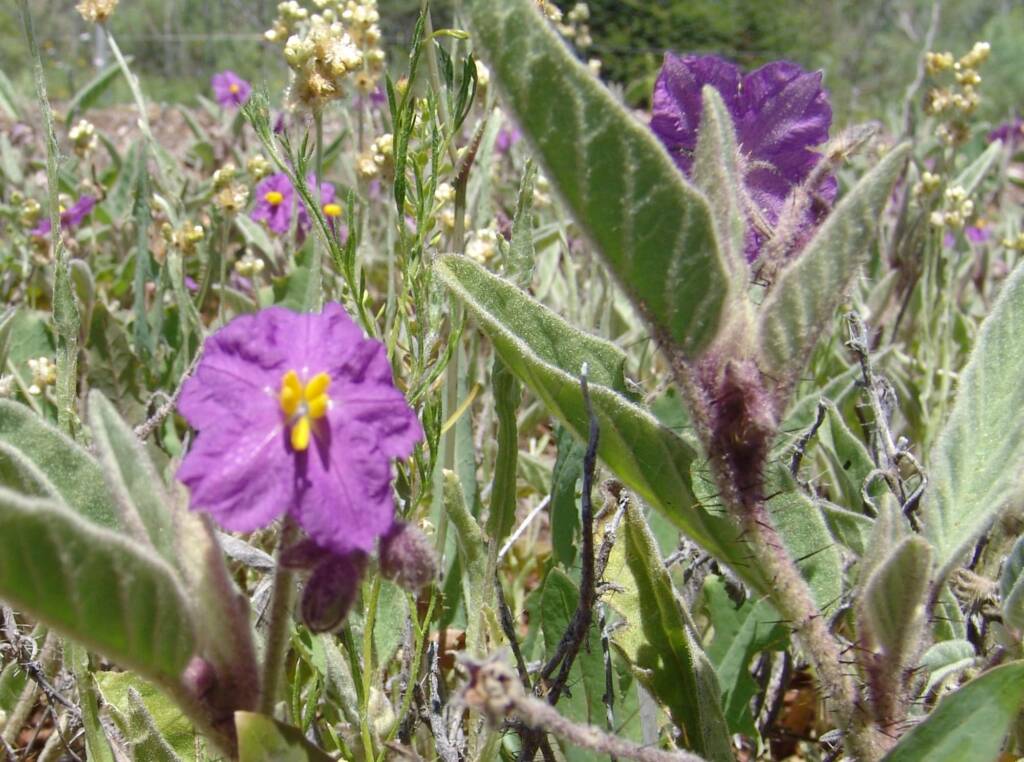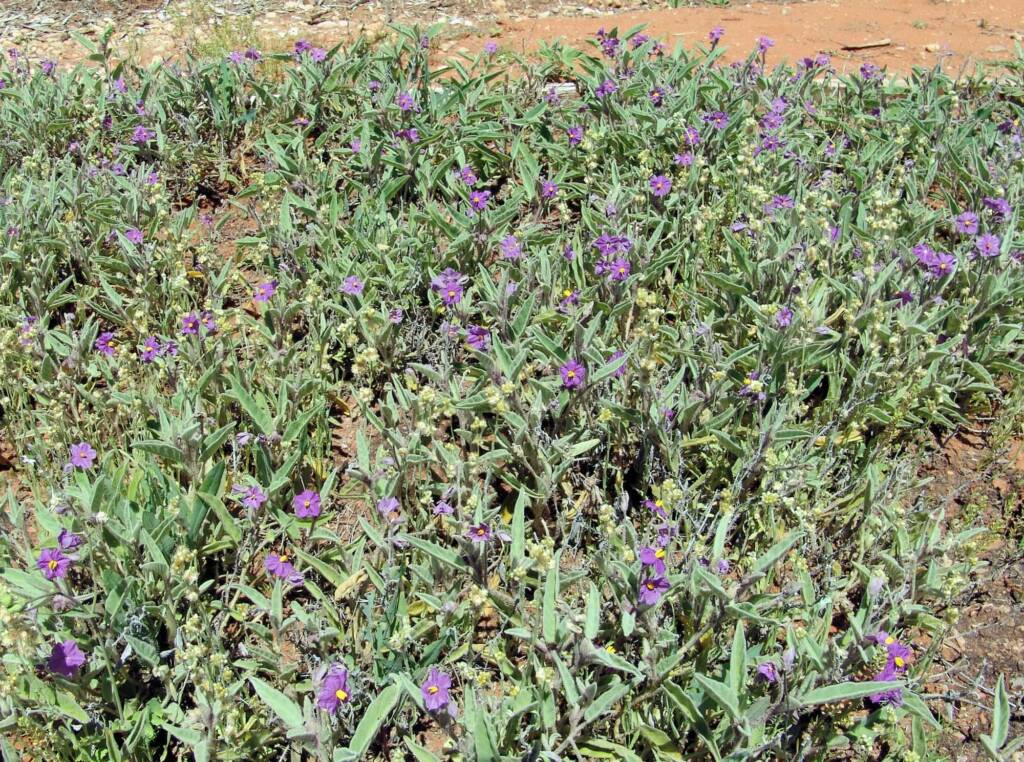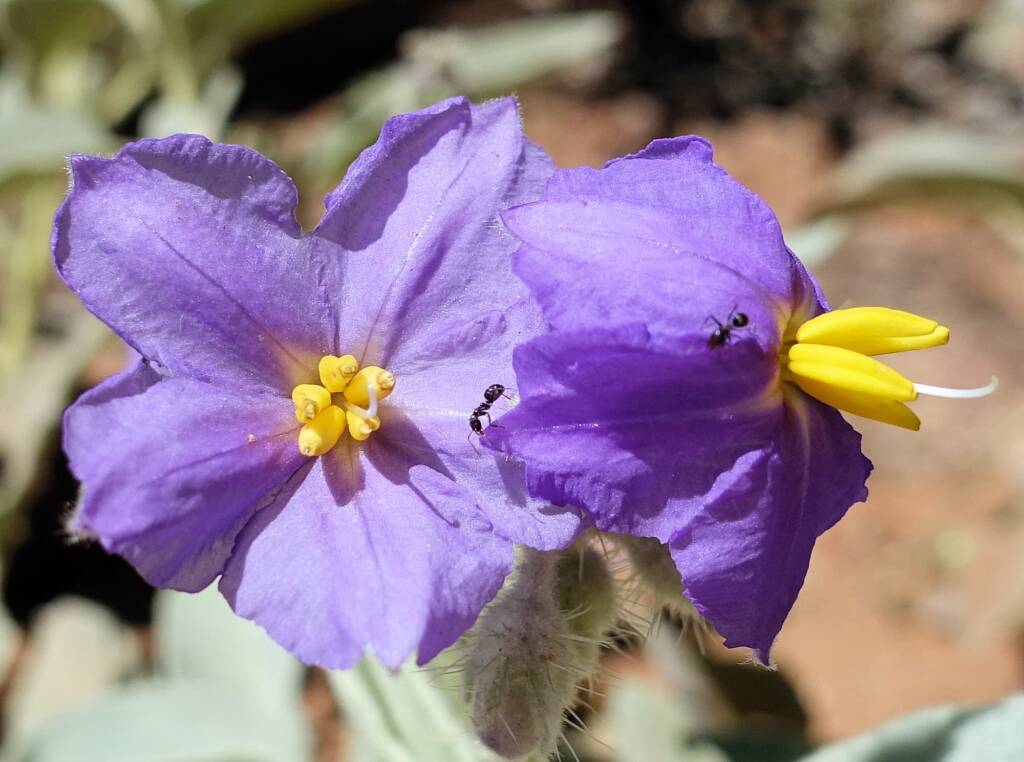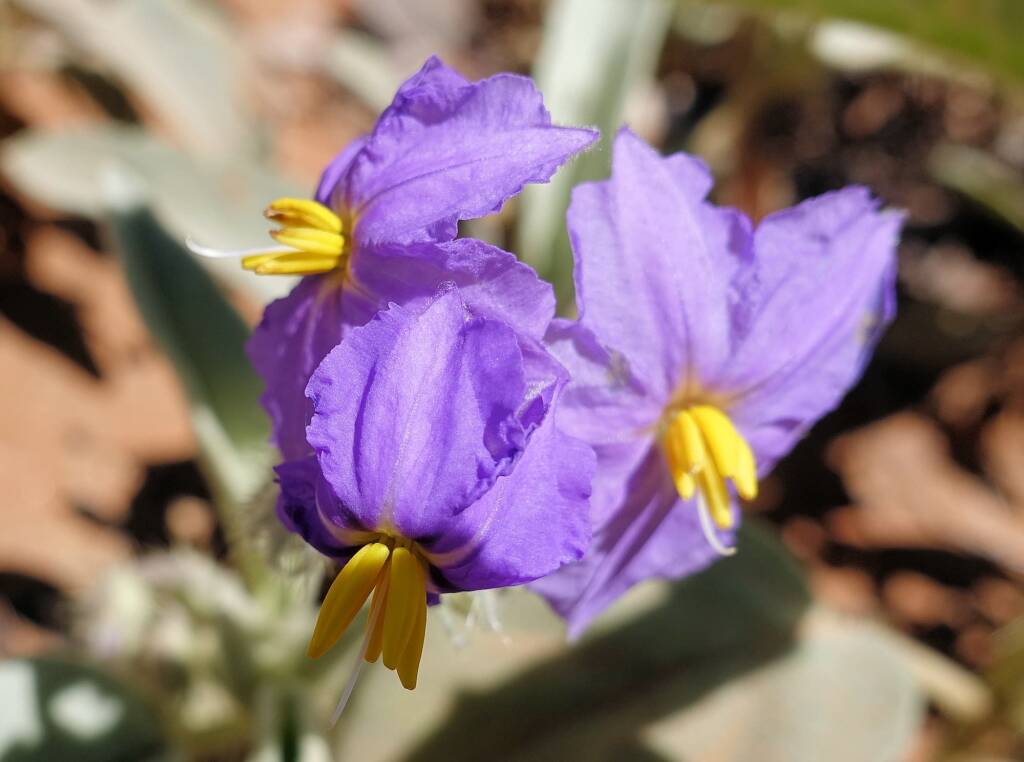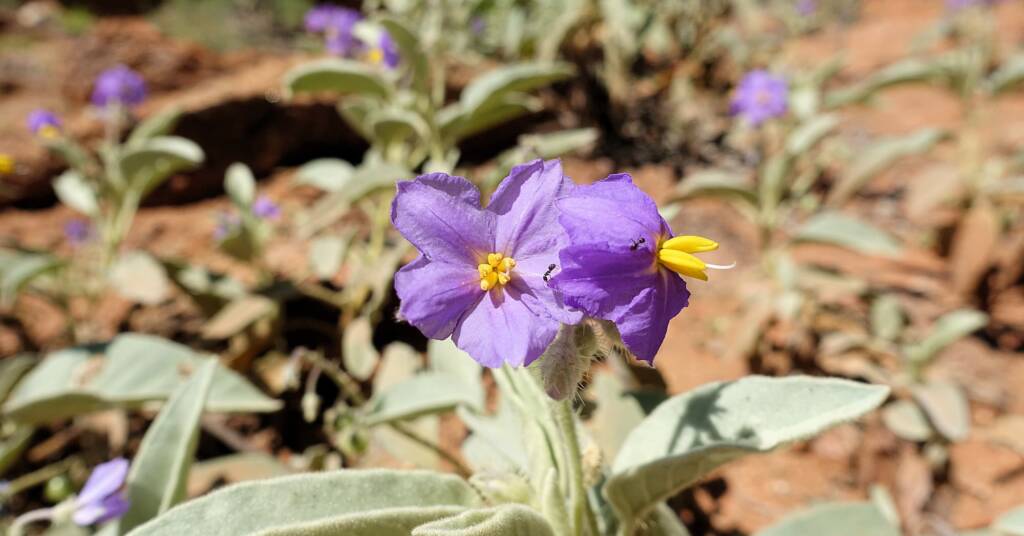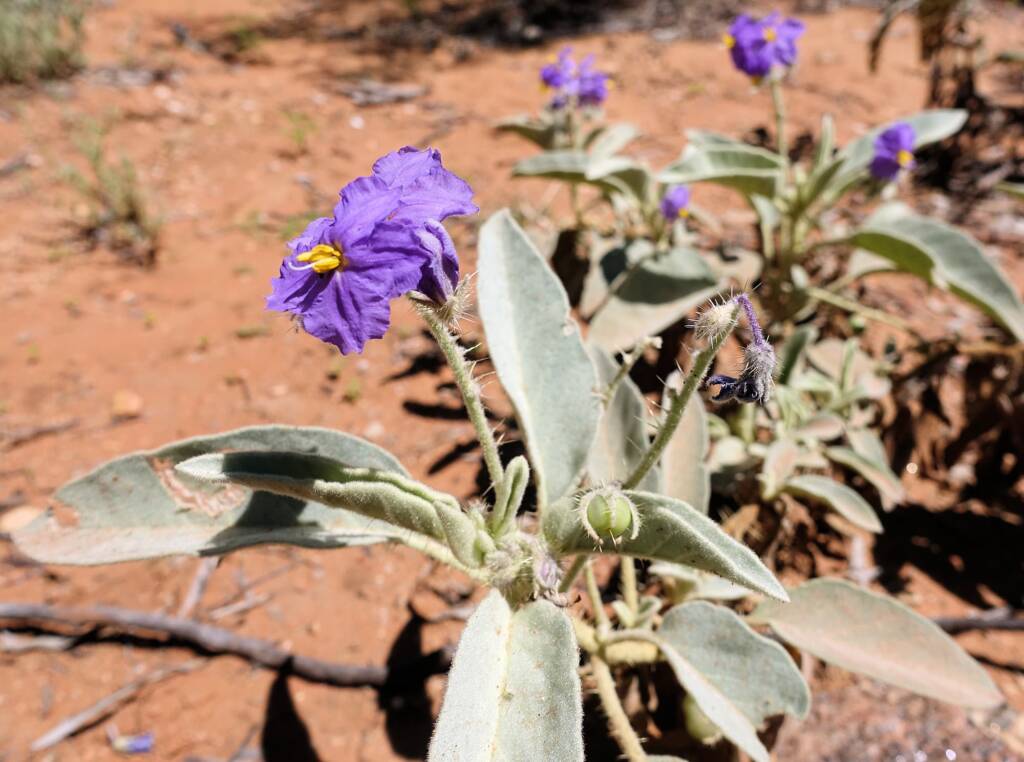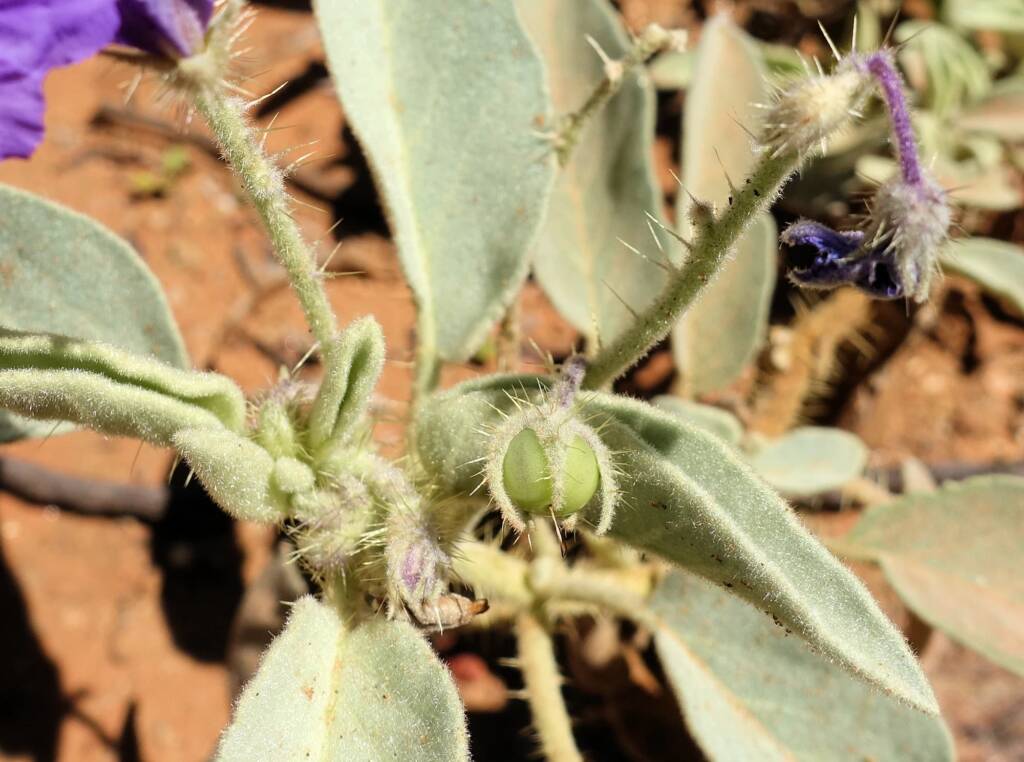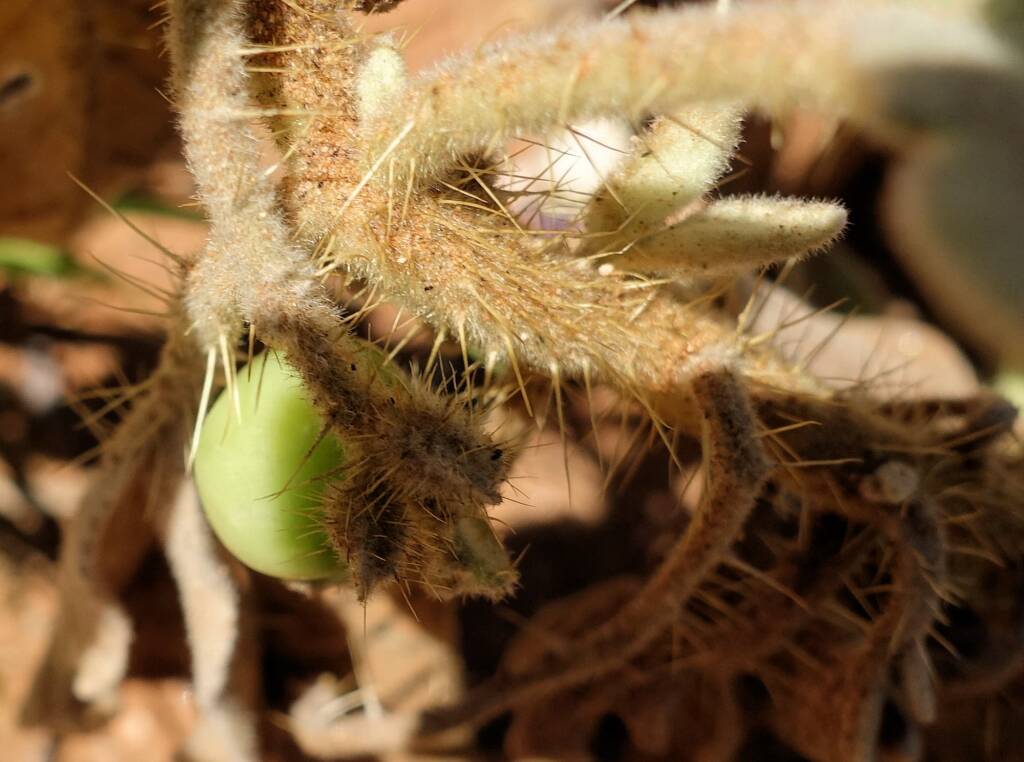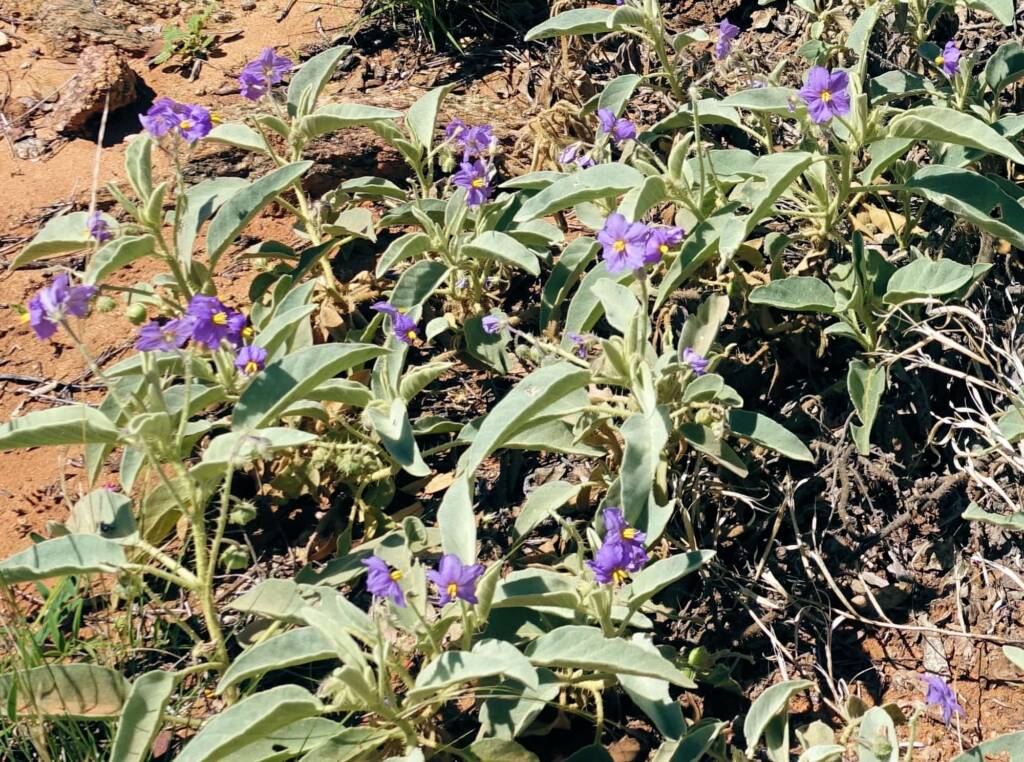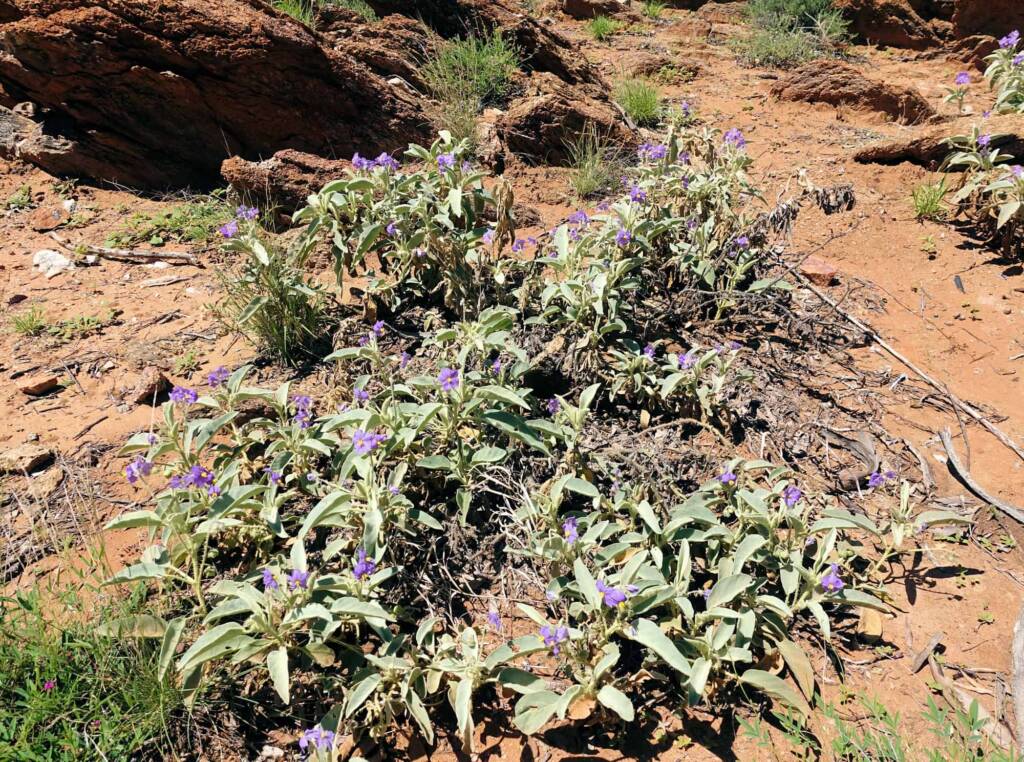Alice Springs Flora •
Alice Springs FloraAlice Springs Flora Index Acacia ligulata Annual Yellowtop Apple Bush Bougainvillea Burdekin Plum Carob Tree (Ceratonia siliqa) Cattle Bush Desert Cotton (Aerva javanica) Desert Oak Eremophila Wildberry Feijoa sellowiana Flannel Cudweed Fork-leaf Corkwood Ghost Gum Golden Everlasting Kurrajong Lemon-flowered Gum MacDonnell’s Desert Fuchsia Native Bluebell Native Tomato Needlewood Olive Tree Perennial Yellow Top Rat’s Tail River Red Gum Inland River Red Gum Rosy Dock Round-leaved Mallee Scurvy Grass Silky Eremophila Stemodia viscosa Striped Mintbush Sturt’s Desert Pea Sturt’s Desert Rose Tangled Leschenaultia Tar Vine Weeping Bottlebrush White Cedar Yellow Billybutton Yellow-keeled Swainsona Yellow Oleander
The Native Tomato, species Solanum ellipticum, is also commonly called the Bush Tomato, a name given to a number of similar looking plants in the genus Solanum. Extreme care should be taken, when identifying this species, as most of the species in this genus are poisonous, or require specific treatment first, such as S. coactiliferum, which is only edible after removal of the skin.
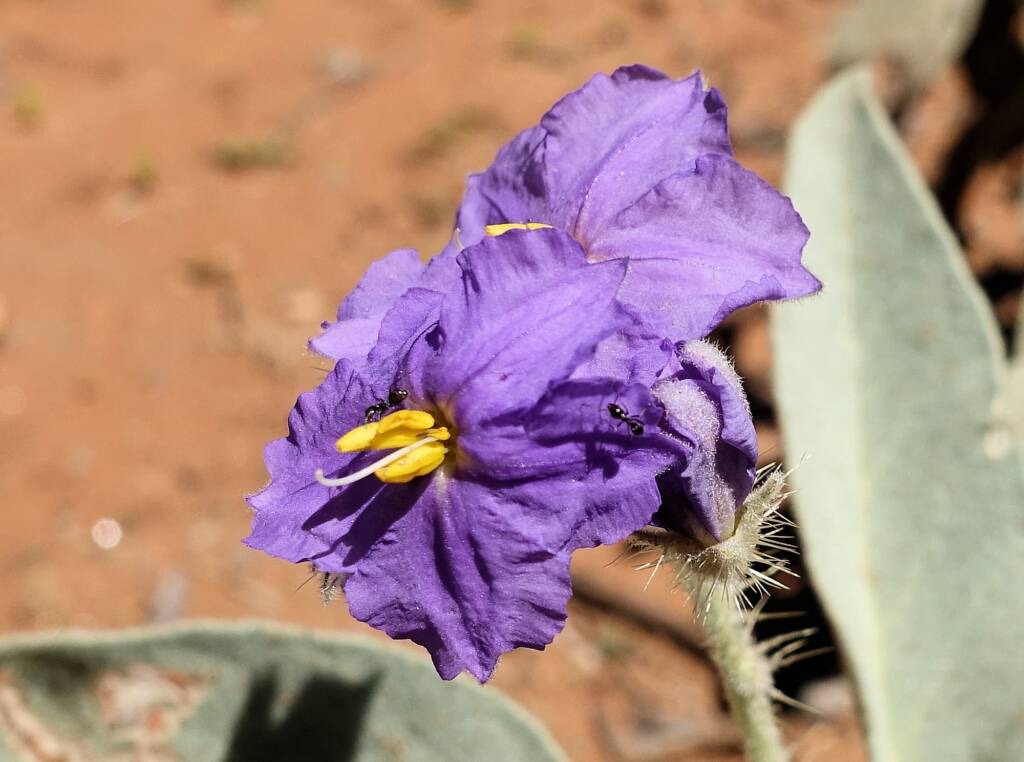
There are a number of cultivated species that are known as ‘bush tomato’ or ‘bush raisin’, which include Solanum esuriale, S. centrale and S. ellipticum.
A striking looking plant, that is usually at their best after rain, with purple mauve flowers and furry velvety leaves that are pale green or greyish. The Solanum ellipticum corolla is a more pentagonal shape, measuring 20–30 mm diameters across, bright yellow stamen/anthers that are about 4–5 mm long, with 1 to 7 flowers on the inflorescence. The Solanum centrale has a more star-shaped flower.
The leaves are ovate to elliptic, about 4–8 cm long and 2–3 cm wide, undulate and the petiole is 1–5 cm long.
The fruit are round that starts off green (may have purplish stripes) and then turns to yellow when ripe. The fruit of this species is edible but care should be taken as other Solanum species have poisonous or unpalatable fruit.
| CAUTION If you are not an expert at identifying the plant, ‘DO NOT’ eat the fruit, as some Solanum species that look similar, are toxic. In the Solanum species, the unripe fruit contains the toxin solanine (the same as that found in green potatoes). Only a select few species of Solanum produce edible fruit when fully ripen. Others remain toxic. There are many other Solanum species that resemble Solanum centrale, and only some of them produce edible fruit eg Solanum chippendalei and Solanum ellipticum. Some closely related species produce fruit that are toxic. S. sturtianum is poisonous and can usually be recognised by the yellow or black dry brittle fruits. |
For more information check out our Flora > Solanum > Bush Tomato.
See our info on Bush Tomato in Aboriginal Indigenous Symbols, Icons and Imagery.
- Scientific classification
- Kingdom: Plantae
- Phylum: Charophyta
- Class: Equisetopsida
- Subclass: Magnoliidae
- Superorder: Asteranae
- Order: Solanales
- Family: Solanaceae
- Genus: Solanum
- Species: Solanum ellipticum
Footnote & References
- Solanum ellipticum, Australian Native Plants Society (Australia), http://anpsa.org.au/s-eli.html#
- Solanum ellipticum, eFlora SA, Government of South Australia, http://www.flora.sa.gov.au/efsa/lucid/Solanaceae/Solanum%20species/key/Australian%20Solanum%20species/Media/Html/Solanum_ellipticum.htm
Alice Springs FloraAlice Springs Flora Index Acacia ligulata Annual Yellowtop Apple Bush Bougainvillea Burdekin Plum Carob Tree (Ceratonia siliqa) Cattle Bush Desert Cotton (Aerva javanica) Desert Oak Eremophila Wildberry Feijoa sellowiana Flannel Cudweed Fork-leaf Corkwood Ghost Gum Golden Everlasting Kurrajong Lemon-flowered Gum MacDonnell’s Desert Fuchsia Native Bluebell Native Tomato Needlewood Olive Tree Perennial Yellow Top Rat’s Tail River Red Gum Inland River Red Gum Rosy Dock Round-leaved Mallee Scurvy Grass Silky Eremophila Stemodia viscosa Striped Mintbush Sturt’s Desert Pea Sturt’s Desert Rose Tangled Leschenaultia Tar Vine Weeping Bottlebrush White Cedar Yellow Billybutton Yellow-keeled Swainsona Yellow Oleander
Alice Springs FaunaAlice Springs Native Bees Alice Springs Beetles Alice Springs Birds Alice Springs Gastropods (Gastropoda) Alice Springs Insects Alice Springs Marsupials Alice Springs Reptiles Alice Springs Spiders

